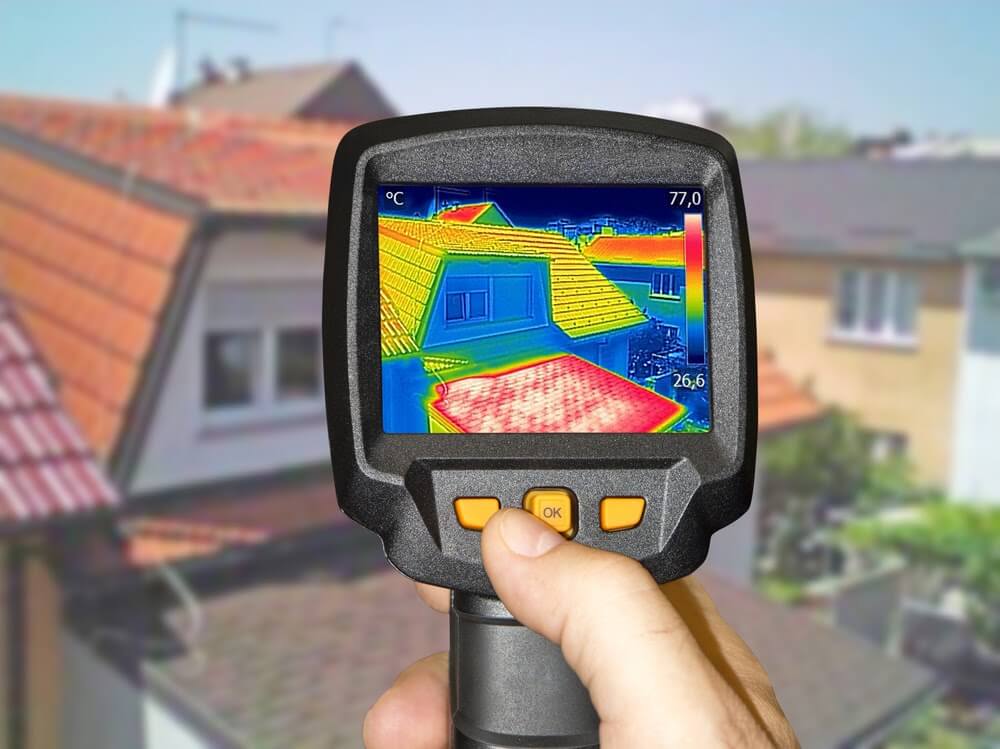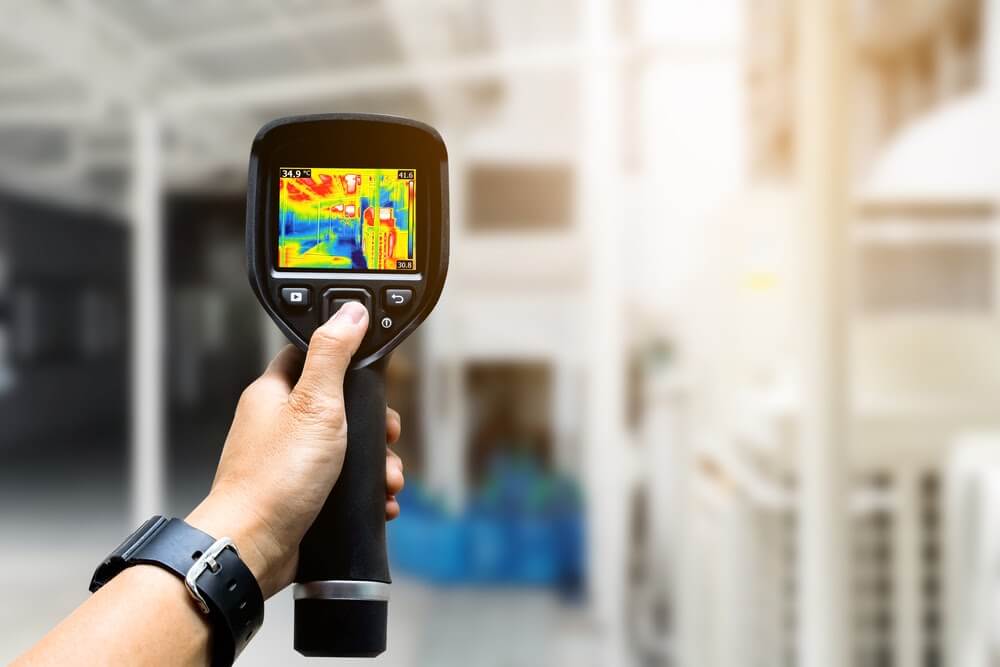Request Quote
Home | Our Blog | Use of Thermal Imaging in Home Inspections
Reviewed by Tomas Kalkys. President.
Qualifications: More than 20 years of experience in residential and commercial exterior remodeling.
Founding farther of Legacy Service.
Written by LegacyUSA Team
posted on Jul 27, 2020
Get Estimates From Roofing Pros

If you’re purchasing a new home, it’s a good idea to get an infrared thermal imaging inspection before you make any decisions, especially if you’re a first-time buyer. In our opinion, thermal imaging for home inspections is more than worth it.
You might be wondering what exactly thermal imaging inspections are used for. These cameras can spot small, but important changes in temperature throughout different areas of the house, which identifies problem areas that are almost impossible to see to the naked eye.
At Legacy Service, we provide installation and replacement services for roofing, siding, windows, and doors for homeowners throughout southeastern Pennsylvania, New Jersey, and Delaware. Give us a call at 215-798-9790 to schedule an appointment.
Not a real zip code.

Many people have never even heard of home thermal imaging inspections before. If you’re one of the ones who haven’t, then it’s time you learned about it! This type of technology is helpful in detecting any issues behind your walls without having to dismantle them.
Thermal image scanning produces images of invisible heat energy that’s emitted from objects in the home. This allows the inspectors to measure it. The good thing about thermal imaging is that it can help diagnose the problem instead of just identifying the symptoms. If you know what the issue is, you’ll be able to get it fixed much more easily.
Thermography home inspections use infrared cameras and still cameras to measure surface temperatures. They’ll be able to see any light that’s in the heat spectrum and use images or videos to record the changes in temperature. It ranges from white in warmer areas to black in colder areas. The images will help you determine where more insulation is needed and whether it has been installed correctly.
These types of inspections are not only done for people who are buying a new home, but also for homeowners in need of an energy assessment. If you’re looking to increase your home’s energy efficiency, we recommend scheduling a home infrared inspection.

Infrared imaging inspections are not only used to see where you need insulation; they’re also used to reveal other types of issues that you may need to fix within your home. Infrared inspection cameras can reveal everything from moisture problems to electrical issues.
If a home inspection with an infrared camera reveals moisture problems, it may be due to roof leaks, mold, or even termite nests. Electrical issues are another story. They may be present if the inspection reveals foundation cracks, missing insulation, ventilation problems, structural concerns, rodent infestations, and heat/energy loss.
Not a real zip code.
Regular inspections may miss some of these issues because they’re invisible to the naked eye. That’s why we recommend getting an infrared scan for your home inspection. It may help reveal small problems before they get any larger, helping you save a bundle of money.
Infrared cameras offer a non-invasive way of monitoring a building’s condition by providing high-resolution thermal imagery, which can reveal everything from potential structural and moisture issues to difficulties with energy efficiency. If you’re wondering if it’s worth it for a thermal imaging home inspection, you don’t have to wonder any longer. It’s definitely worth it.
A thermal camera for home inspections can help significantly when it comes to finding the source of roof leaks. Water has a high thermal capacity, so it will normally give up its heat at a slower rate than the roofing materials that surround it. With just one image, you’ll be able to see if any areas have accumulated moisture.
It’s recommended to capture this thermal image in the evening when the outside temperature has begun to fall. The reason for this is that the roofing materials will have released their heat, so they’ll show up as blue or purple in the picture. The materials that have been moistured will still be warm, so they’ll most likely show up as red or orange in the image.
Using the thermal images, you can determine if your home has any leaks and where they’re coming from. In some cases, you may need to replace your roof, especially if it’s getting up there in age. If so, you can contact our Legacy Service team for a free roofing replacement consultation.
Another thing home inspections with thermal imaging are used for is to find any electrical faults. They can help find the source of electrical problems accurately and quickly, which can add enormous value to your home because it helps prevent injury and property damage.
Problems with electrical connections or wiring are highlighted as hot spots in infrared images, which makes them easy to locate and repair.
Keep in mind that the house thermal image will have yellow marks where the electrical systems have damage. The thermal image will help make it easier to spot, so you can put it on your repair list. Contact your local electric company if you need repairs to your electric system. Search for companies on Google and do your research. Contact the top three companies on your list, and see which one would best fit your requirements. As always, if you have issues with your home exterior and need a replacement for your roofing, siding, or windows, you can contact Legacy Service.
Last but not least, structural defects can be revealed through the use of infrared home inspections. When the walls, floors, and ceilings are scanned with a thermal camera, you can notice differences in temperature that will be able to identify missing structural components and damaged parts. This makes infrared home inspections more than worth it.
These infrared images will also be able to show you if there’s any missing insulation or wet basement walls, which can be a sign of mold. Once you know what the issue is, you can stop the bleeding before it gets any worse.
At Legacy Service, we may not perform inspections, but we will install and replace almost any part of your home exterior, from your roofing and siding to your windows, doors, and gutters. If you’re in need of roofing or siding replacement, please feel free to give us a call at any time to schedule a free consultation. We provide services for homeowners throughout southeastern Pennsylvania, New Jersey, and parts of Delaware.

There are several types of thermographic inspection devices. The energy auditor may use:
Thermal line scanner – A thermal line scanner works by showing radiant temperature viewed along a line. The line scan is superimposed over a picture of the panned area. This process will reveal the variations in temperature along the line. This device should be used where a most accurate and homogeneous temperature reading is required.
Spot radiometer – A spot radiometer (also known as a point radiometer) is perhaps the simplest device to use for thermographic inspection. It measures radiation one spot at a time, and it uses simple meter reading to show the temperature in a particular spot. The inspector will use the device to scan the area, and they’ll note the differences in temperature. For the areas that seem off, you’ll know to inspect them further.
Thermal imaging camera – A thermal imaging camera is the most accurate device to use for thermographic inspections. It produces 2-dimensional thermal images of areas that have a heat leakage. When you use infrared film in a conventional camera, it’s not sensitive enough to detect heat loss.
The device used is typically the one the inspector believes would be best for the job at hand. Infrared home inspection cost will differ depending on what you need, which is why it’s best to ask before you make any decisions.
You may be wondering: Is a home inspection using infrared worth it?
In many cases, it is definitely worth it because thermal imaging can see what the naked eye cannot. It can help detect problems including electrical issues, roof leaks, energy loss, plumbing leaks, heat loss and air infiltration, missing or damaged insulation, and more. If there are any issues with your home’s exterior, please feel free to give our team at Legacy Service a call.
At Legacy Service, we offer roofing, siding, windows, doors, and gutter installation services. Our roofs will keep you safe and dry. Our siding will give your home a facelift while also improving the durability of your home. Our windows will enhance the style of your home and increase its energy efficiency.
Learn more about updating your home by giving us a call at 215-798-9790. You can also reach us by filling out a contact form here: https://legacyusa.com/contact/
Posted on Jul 27, 2020 in Roof
Read our news
HOW LONG SHOULD A ROOF LAST? ELEMENTS
A lot of elements play a role in maintaining the integrity of the roof, but as a homeowner, the most important components to pay attention to are the underlayment, ventilation, and material.
DIFFERENT TYPES - DIFFERENT LIVES
Choosing the best roofing material for your home is the first important step in ensuring that you have the highest quality roof possible.
METAL ROOF VS ASPHALT SHINGLE ROOFING
Two of the most popular roofing materials on the market are metal and asphalt, and both offer different pros and cons to a customer.
Pros and cons of Asphalt Shingle Roofing
Replacing a roof is an expensive decision, and cannot only come down to cost.


